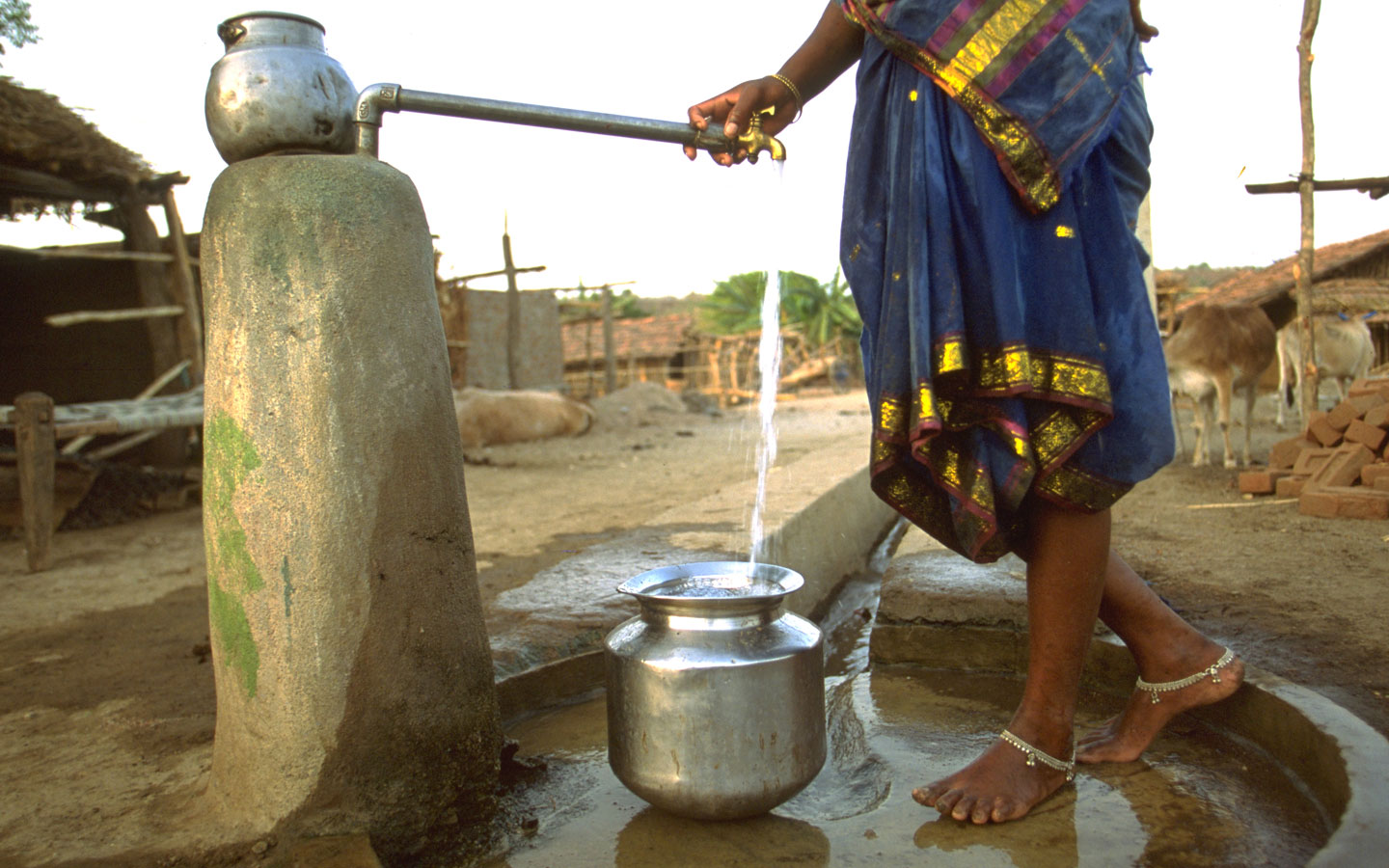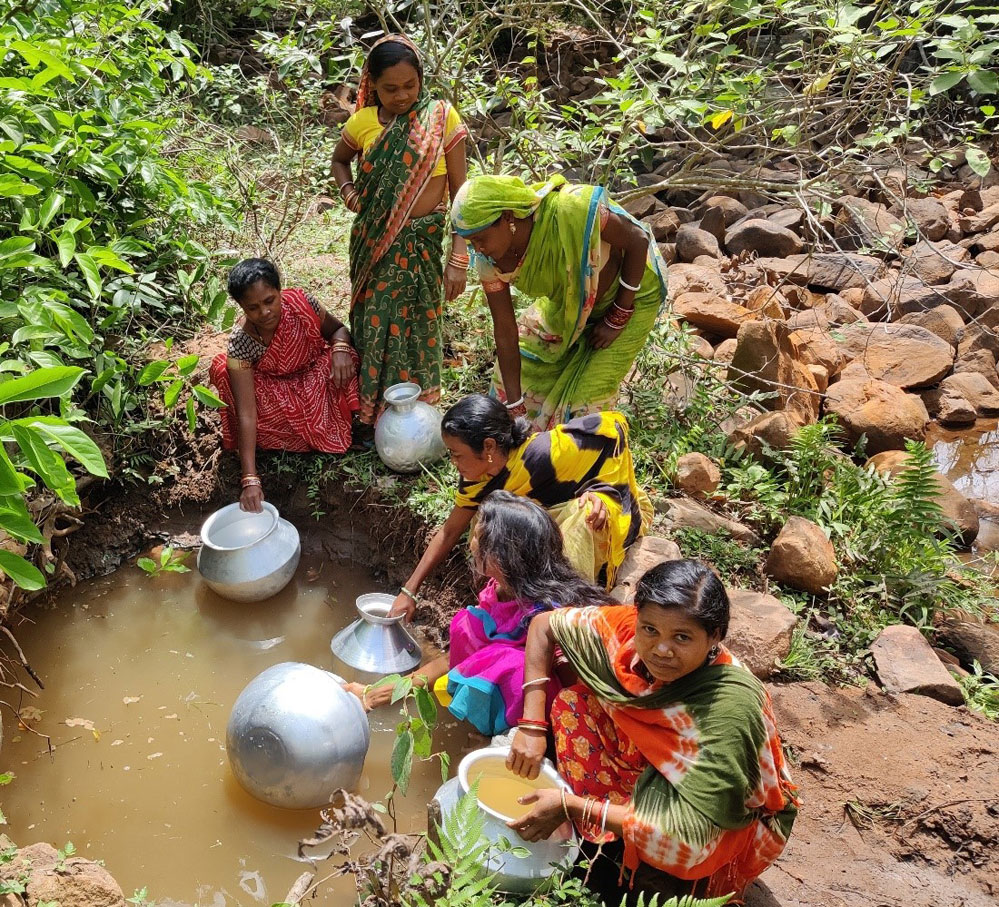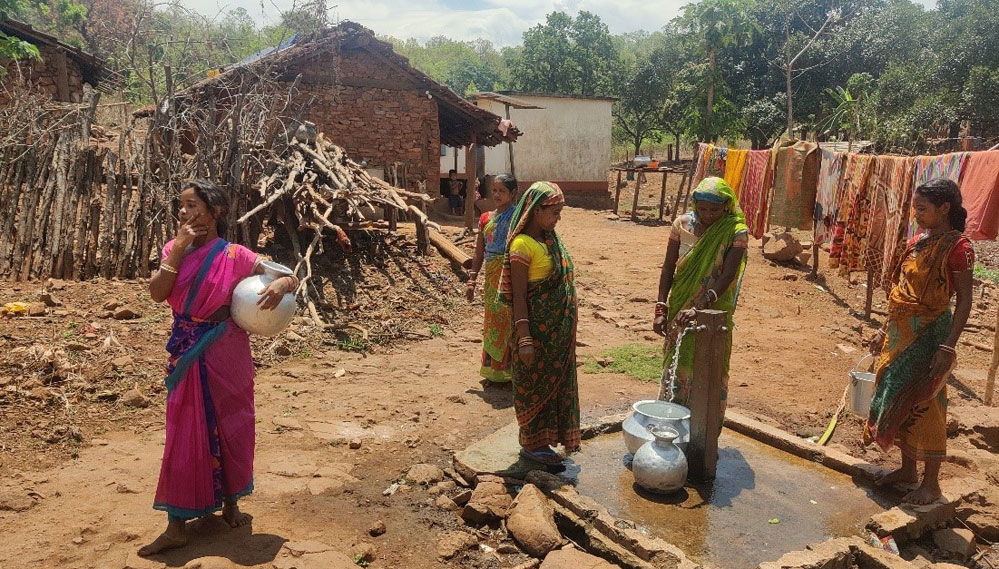The sun is the unlikely solution to rural India's water problem
IFAD Asset Request Portlet
Asset Publisher
The sun is the unlikely solution to rural India's water problem
Estimated reading time: 3 minutes
Access to safe water and sanitation is a human right and a Sustainable Development Goal. But as we move ever closer to the 2030 deadline, one in four people worldwide still lack safe drinking water, while an estimated 1.4 million die every year from poor water, sanitation and hygiene.
This is a rural issue: eight in ten people who lack basic drinking water services live in rural areas. Yet, even in the most remote areas of the world, clean and safe water can be had—with the right infrastructure and technology.
The domino effects of unsafe water
Kadalidihi, in India's eastern Odisha State, is perched atop a hill, far from the comfort of modern facilities. Without a pond or a well, the 47 families living in the village used a small stream to bathe, use the lavatory, wash their cattle and collect drinking water.
Overuse of this scarce water resource resulted in waterborne diseases, like cholera, which in turn meant people could not earn money to support themselves and their families.
Women are worse affected
 |
| Before the project villagers collected unsafe drinking water from a nearby stream. © Prabin Kumar Patra |
As is too often case, women were disproportionately affected. Some suffered gynaecological problems due to the dirty water, while the social stigma of using the lavatory in broad daylight meant young women were forced to wait until sundown to relieve themselves.
Moreover, the women of Kadalidihi were forced to wake up early every morning to fetch water for the family before working in the fields, only to return from work and repeat the process in the evening. This left them with little time for much else.
Here comes the sun
The villagers knew something had to change – but how could they get enough clean water for an entire village on top of a hill?
The answer came when members of the IFAD-financed OPELIP project joined forces with the local community to implement solar-powered water systems.
These water systems reduce emissions from diesel systems and resolve the issue of dwindling water supplies by pumping from levels deep below the ground, even if there is no electricity.
 |
| Women in Kadalidihi collect clean drinking water. © Prabin Kumar Patra |
Today, waterborne diseases among the people of Kadalidihi have decreased.
With a reliable and nearby source of clean water, women can now spend more time with their families and take on additional income-generating activities. Moreover, they are no longer exposed to the dangers of bathing in public as they can easily collect water to wash at home.
“We’re very happy, as we now get clean water at our doorstep,” says Suka Dehury. “We can take regular baths and wear clean clothes; we even use surplus wastewater for kitchen gardens and producing green vegetables.”
One size fits all
South of Kadalidihi, another community faced similar challenges. All 31 households in Parsali once used the same tube well to access unclean water, with supply quickly dwindling.
This resulted in waterborne diseases and heightened tensions between the village’s different social factions, particularly during the summer months when water levels dropped significantly.
To mediate the ongoing conflict, government agencies and NGOs met with local people. A unanimous decision was made to build two solar-powered boreholes, giving groups equal access and usage rights to water resources, thereby lessening the chances of conflict and restoring health and tranquility to the community.
The national government is now expanding the project across the state and aims to give 250,000 people from vulnerable tribal communities access to safe water.
Publication date: 08 May 2023